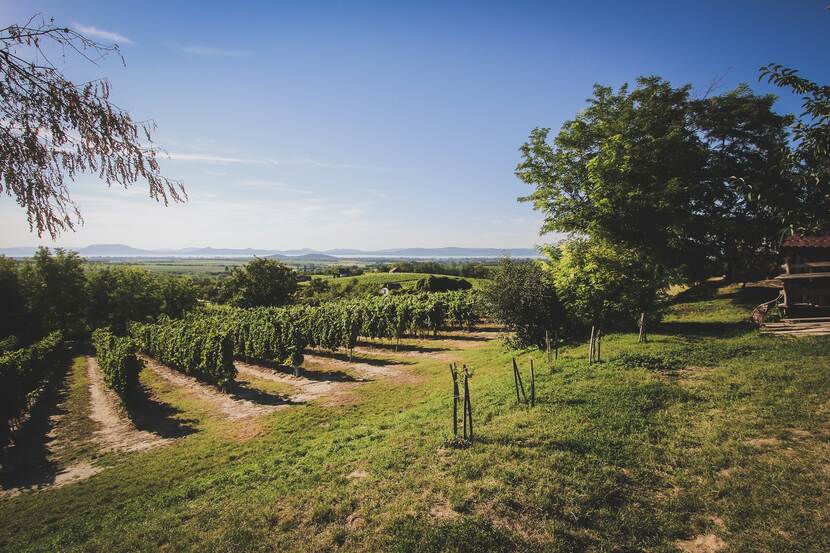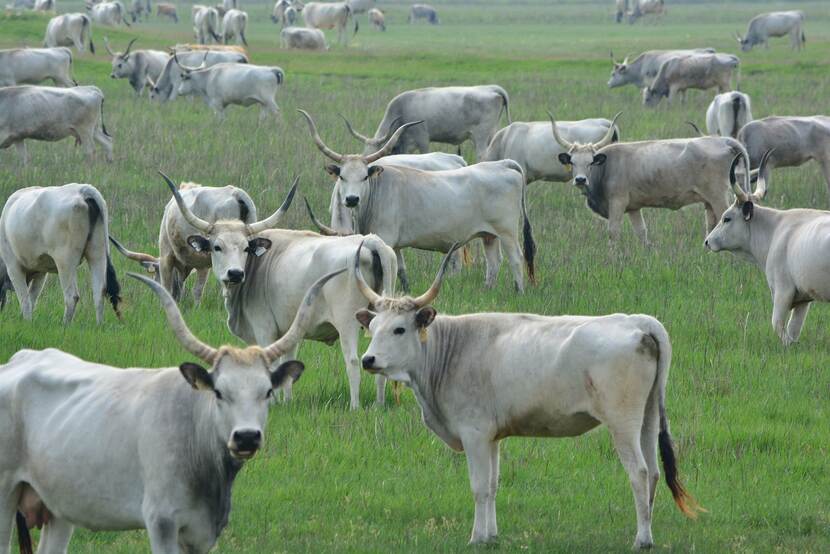Hungary Newsflash Week 38
Precision agriculture, agroeconomic trends, pandemic recovery subsidies, a plant disease outbreak, rural greening - The week in hungarian agriculture

Flour prices on the rise
According to a recent report by the news portal Magyar Mezőgazdaság, the price of flour will increase in Hungary throughout September. Based on the final figures of this season’s harvest, the country produced ca. 4.7-4.8 million tons of wheat this year, roughly a half a million tons less than in 2019. Furthermore, the quality of the harvested cereals is lower as well. While usually, based on gluten and protein content and quality, 60% of the harvest is fit for use in the food industry, this year only around 30% reached the quality standard.
The milling industry usually processes 1.2 million tons of wheat alone for human consumption, and another 1.2-1.3 million tons are used as feed in the animal sectors, making the surplus over the 2.5 million tons of domestically used wheat the produce directed into export.
This year, only 1.4 million tons of wheat are fit to be used as food. This amount will have to be divided among the domestic milling industry, the animal husbandry sectors which use it as protein supplement and export milling wheat. Consequently, the average per ton price of €137.06 has been steadily rising, and is at €156.65 currently. In turn, the price of flour will probably be 3-5% higher by the end of the month.
Hungarian farmers investing more in precision agriculture
According to a recent sectoral survey by Budapest Bank, the willingness to invest in modern agro tech among Hungarian producers is steadily rising. A few years ago, precision agriculture was merely just a catchy term repeated in policy agendas in Hungary. According to the survey however, 70% of all agricultural entrepreneurs are now planning to invest in the latest technologies in the immediate future or have already started modernizing, and 10% are planning to already start shifting to precision agriculture before the end of the year. This is also confirmed by investment figures. While the average total investment in agro-tech in 2019 was €280 million, this has increased to €308 million in 2020.
The study showed that the overwhelming majority of producers think that while this year’s pandemic had only minor effects on their businesses, vulnerability to increasingly chaotic environmental and weather conditions is undermining their resilience and competitiveness, which is probably the driving factor behind the increasing willingness to invest into precision agriculture technologies and methods.
Plant disease threatens Hungarian vineyards
Domestic winemakers face a new challenge as the Flavescence dorée, a phytoplasma disease that attacks grapevines, has made an appearance in Hungary. So far, the disease has mostly been affecting the Transdanubia, the region that makes up the Western half of Hungary. The disease is spread by Scaphoideus titanus, also known as American grapevine leafhopper, an invasive insect series which first appeared in Hungary in 2006.
When the insect first appeared, it was not yet observed to carry the infection. Flavescence dorée is a very destructive plant disease which can lead to 40-50% yield drops in grapevines. To aid producers, the National Food Chain Safety Office is now updating maps which track the spread of the leafhoppers.

Animal husbandry subsidies for pandemic recovery
As a part of the Economic Action Plan, the Ministry of Agriculture dedicated €69.3 million for the protection of the domestic food industry in the form of a National Food Crisis Management Program, said Minister for Agriculture István Nagy this week at the opening of the annual conference of the Hungarian Animal Breeders Association.
Since more than eight hundred horse breeder entrepreneurs applied for financial assistance with their breeding mares, subsidies in the industry have been increased to €886.6 thousand. Further subsidies include a disbursement of €2.217 million for more than six thousand cattle breeder entrepreneurs, €4.7 million for dairy cows, and €2.5 million for breeding ewes (sheep). In total, 35 thousand agricultural entrepreneurs will receive animal husbandry subsidies in the fall.
The Minister also highlighted that animal husbandry subsidies also target key policy goals. One such goal is supporting the preservation of indigenous and endangered livestock species. Another is assisting the domestic dairy industry. Dairy subsidy disbursements in Hungary are worth €141.4 million, supporting the cattle, goat and sheep sub-sectors within the dairy industry.
Inflation in Hungary highest in the EU
According to the news portal 444.hu, in the months July and August, Hungary had the highest inflation rate out of the member states of the EU. While the Central Statistical Office measured an inflation rate of 3.9%, Eurostat places it at 4%. This figure is at the border of the 3 +/- 1% target figure of the Hungarian National Bank and is much higher than the 0.4% EU average.
17 thousand hectares of forests to be planted
In a radio interview Tuesday morning, Deputy State Secretary Sándor Szentpéteri of the Ministry of Agriculture stated that since the national afforestation program started last fall, Hungarian agro producers have applied for the plantation of 17 thousand hectares of new forests. According to the Deputy State Secretary, with this addition to the plantation procedures already underway, the size of the forested areas in Hungary might grow by up to 24 thousand hectares in the near future. Mr. Szentpéteri also remarked that forests are an important asset in the fight against climate change.
Aside from forest planting, the national afforestation program also includes a “trees for villages” project, in which villages and towns smaller than 10 thousand inhabitants can apply for the government-funded plantation of trees. The project operates with a pool of 12 thousand indigenous tree saplings for the greening of towns and villages.
Afforestation is a central part of the government’s Climate and Nature Protection Action Plan, which focuses on the increase of the amount of forested land areas, the turning of abandoned agricultural lands into forests, and the planting of indigenous tree species to restore natural habitats. (For more on this, see our September 4 Newslfash.)
Photo credit:
Cover picture: Lake Balaton by holdosi via Pixabay
Hungarian grey cattle byIstván Asztalos via Pixabay